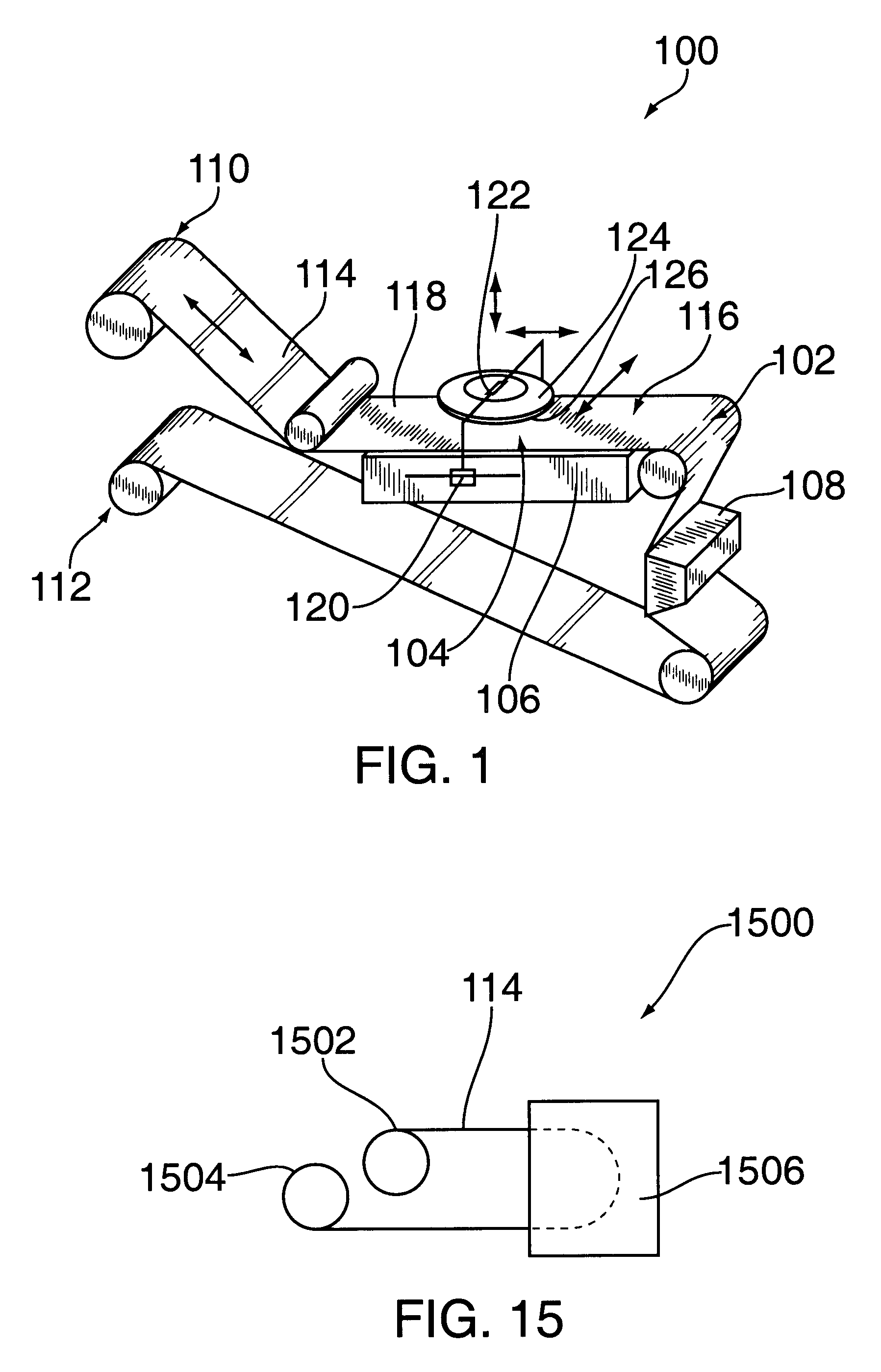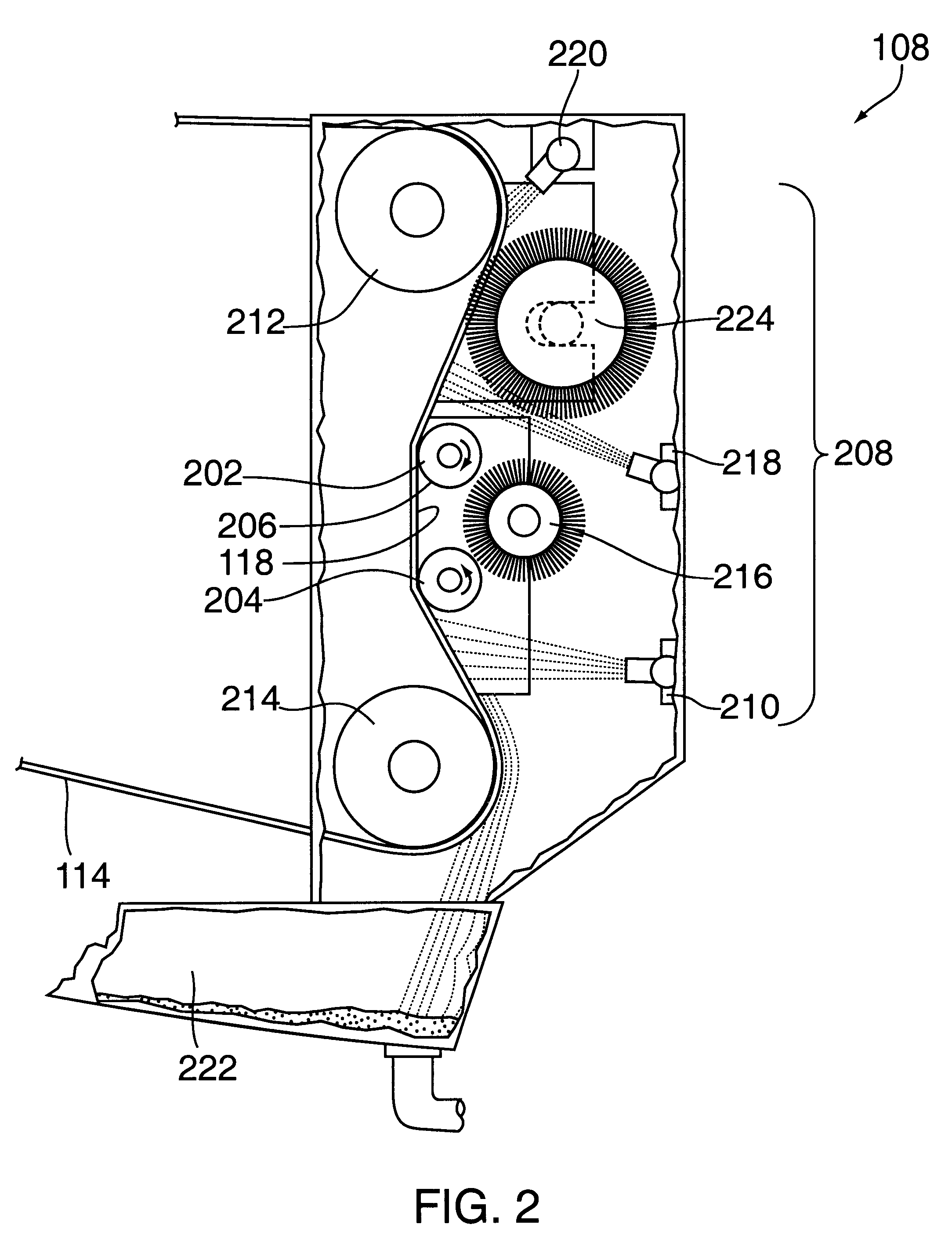Chemical mechanical planarization system
a mechanical and planarization technology, applied in lapping machines, manufacturing tools, abrasive surface conditioning devices, etc., can solve the problems of affecting clogging the surface topography of the polishing media, and material removed from the wafer may become impacted or clogged, and the planarization is not desirabl
- Summary
- Abstract
- Description
- Claims
- Application Information
AI Technical Summary
Problems solved by technology
Method used
Image
Examples
Embodiment Construction
FIG. 1 depicts a schematic view of a chemical mechanical planarization system 100 including a conditioning module 108. The system 100 generally comprises a polishing media magazine 102, a linear drive system 104 and a base 106.
The polishing media magazine 102 generally comprises an unwind 110 and a winder 112. A web 114 of polishing media is run between the unwind 110 and the winder 112. The web 114 can be substantially "rolled-up" at either the unwind 110 or the winder 112, or partially wound on both the unwind 110 and the winder 112 such that various portions of the web 114 may be selectively exposed between the unwind 110 and the winder 112.
A working region 116 of the web 114 is disposed on the base 106 of the system 100. The working region 116 of the web 114 is orientated in relation to the base 106 such that a working surface 118 of the web 114 is on the side of the web 114 facing away from the base 106. An example of such a polishing media magazine 102 is described by Sommer i...
PUM
| Property | Measurement | Unit |
|---|---|---|
| rotational velocity | aaaaa | aaaaa |
| width | aaaaa | aaaaa |
| length | aaaaa | aaaaa |
Abstract
Description
Claims
Application Information
 Login to View More
Login to View More - R&D
- Intellectual Property
- Life Sciences
- Materials
- Tech Scout
- Unparalleled Data Quality
- Higher Quality Content
- 60% Fewer Hallucinations
Browse by: Latest US Patents, China's latest patents, Technical Efficacy Thesaurus, Application Domain, Technology Topic, Popular Technical Reports.
© 2025 PatSnap. All rights reserved.Legal|Privacy policy|Modern Slavery Act Transparency Statement|Sitemap|About US| Contact US: help@patsnap.com



